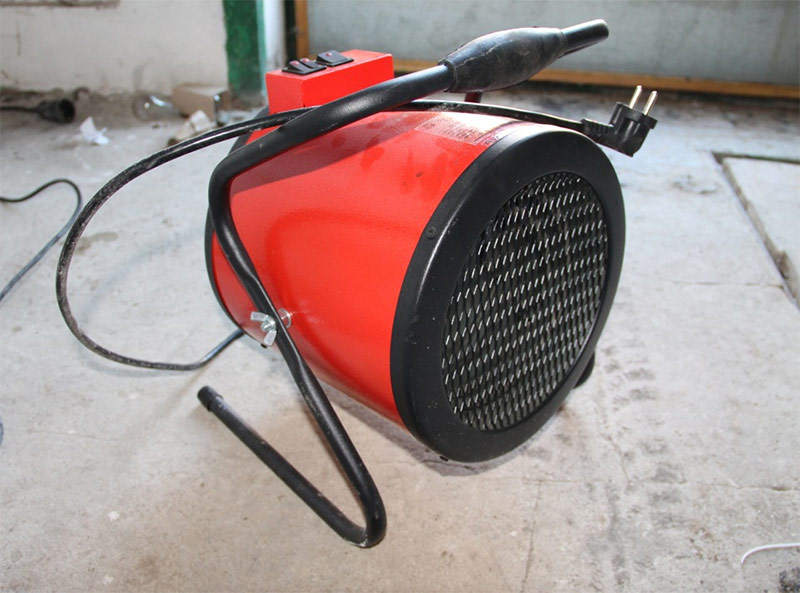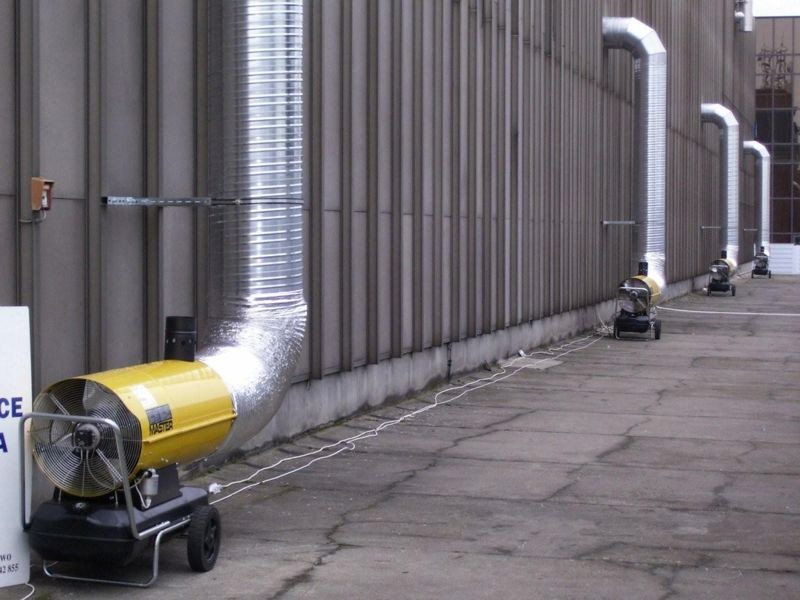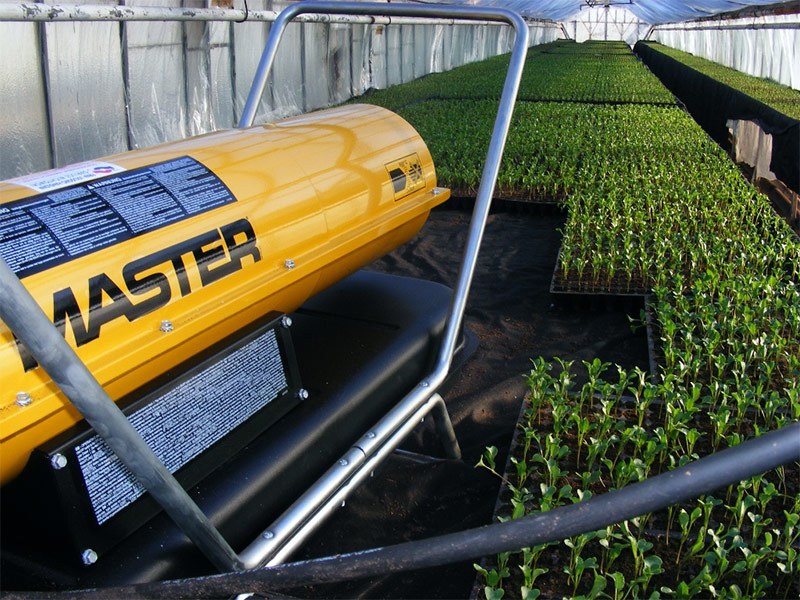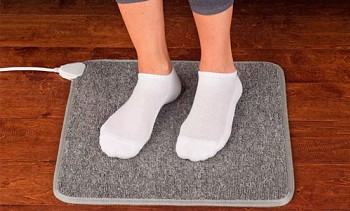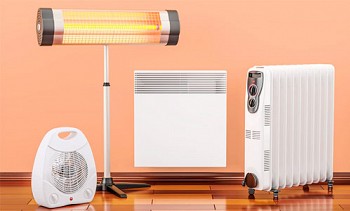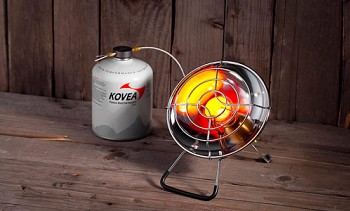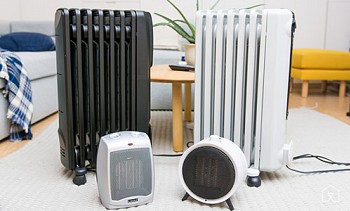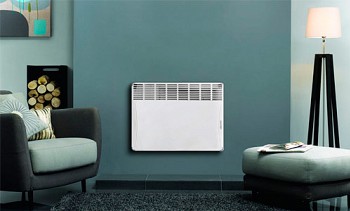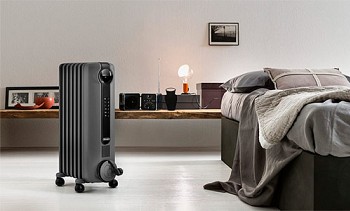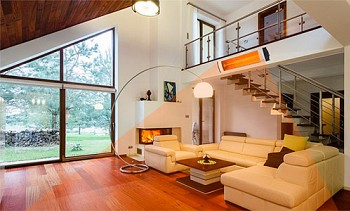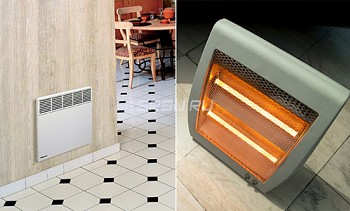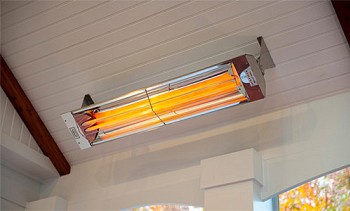If you need to quickly warm up an unheated garage (workshop, change house, warehouse, workshop, hangar, etc.) to create comfortable working conditions there, if your house is connected to central heating, but the batteries are barely alive all winter, if due to high humidity and low temperature repair and finishing work in the room extended indefinitely, if you have an enviable regularity you need to heat a car that refuses to start in the cold, then you can not do without a heat gun.
However, given the fact that the range of these devices is simply huge today, it’s a very difficult task to understand how to choose a heat gun. But having studied this material, you can find exactly that heating device that will be most effective in solving the problem.
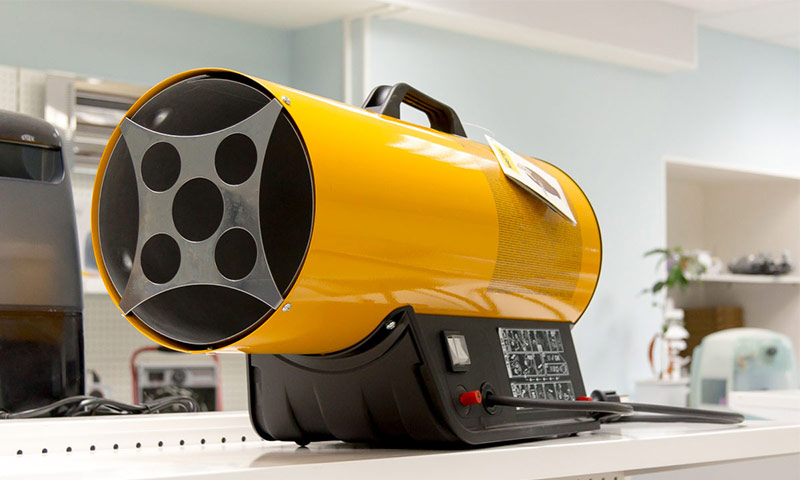
Content:
When choosing a heat gun, the following factors should be considered:
- Type of tasks for solving which one or another type of heat guns is more suitable;
- The functions that the equipment will have to perform (constant heating of the object, periodic use, drying of surfaces, etc.);
- The specifics of the heated room (its size, level of heat loss due to insufficient insulation, the presence / absence of other heating devices, the deviation of the average temperature from the norm, the purpose of the room);
- Energy source (possibility / impossibility, convenience / inconvenience of using this or that type of heat carrier in the existing conditions, its cost and availability);
- Weight, dimensions and mobility of the heating device;
- The cost of a heat gun.
Types of heat guns and their differences
Structurally, heat guns are quite simple devices, the main components of which are the body, heating element and fan. On the body of the gun, made of metal, which prevents both thermal and mechanical damage, there are openings for air intake. The case may have a rectangular shape, but cylindrical heat guns are more common. It is thanks to this form of its own that gives rise to associations with the muzzle of an artillery gun, this type of air heaters got its name. To increase mobility, sufficiently massive and heavy devices are placed on a bed equipped with maneuverable wheels.
Inside the case there is a heating element (electric heater / coil or combustion chamber with heat exchanger) and a powerful electric fan. The fan pumps cold air through the openings in the housing into the gun, drives it along the heating element and promotes the distribution of already hot air in the room. Thus, the heat gun is inherently a powerful fan heater.
Depending on the type of energy carrier used by them for heating, all heat guns are divided into:
- Electric;
- Gas;
- Diesel;
- Multi-fuel;
- Infrared
Below we will consider each of the types of heat guns listed above, talk about their structure, principle of operation, main areas of application, advantages and disadvantages.
Electric heat guns
Either a metal spiral or a tubular electric heater can act as a heating element of an electric heat gun. The second option is preferable, because TENs, although they are slightly more inertial, but unlike open spirals, they last longer, and it is safer to use. The electric fan pumps air into the gun.The temperature of the air mass passing along the heater or spiral gradually rises, and a warm air stream is directed into the room. To prevent overheating of the device and save energy, electric heat guns are equipped with a temperature controller that automatically turns off the heating element (but does not turn off the fan) when the temperature reaches the maximum allowable (or user-set) value.

1. Carry handle.
2. Axial fan.
3. A stream of cold air.
4. Supporting legs.
5. The flow of hot air.
6. Protective net.
7. A heating element.
8. Electrical unit with cable entry, control buttons and temperature limiter.
One of the main advantages of electric heat guns over heaters operating on combustible fuel is their environmental friendliness - during the operation of such devices no exhaust gases or any other waste is generated. For this reason, electric guns can be considered universal in terms of applicability. They can be used to heat both residential and non-residential premises in which people are constantly present (workshops, workshops, train stations, shops). In addition, unlike liquid-fuel guns, electric can be easily “started” even at very low temperatures, and therefore they are successfully used in unheated garages, in cold warehouses, etc. The undoubted advantages of electric heat guns include the ability to arbitrarily long continuous operation and the lack of the need for periodic refueling.
Electric heat guns can be produced in several forms:


Gas heat guns
Gas heat guns operate on gas supplied through a reducer from a cylinder (propane, butane) or a centralized gas network (natural gas). Through the slit-like openings of the burner, gas enters the combustion chamber equipped with a system of mechanical or automatic piezo ignition. Burning, it heats the heat exchanger. The air pumped by the electric fan passes along the heat exchanger and, in contact with its hot walls, is also heated. The presence in the design of a gas heat gun fan dictates the need to connect the device to the mains, however, the power it consumes is relatively small - from 30 to 200 watts.

1. Fan.
2. Burner.
3. The combustion chamber.
4. Warm air stream.
5. Control Panel.
6. Non-return valve.
7. Fuel line.
8. Valve.
9. Gas reducer.
10. Cold air stream.
11. Electrical engine.
Gas heat guns are powerful devices that provide economical, but at the same time fast heating of large areas. However, despite the fact that modern gas guns in most cases are equipped with an automatic flame control system and overheat protection, they still remain potentially dangerous units. In addition, in the process of their work, an inevitable burnout of oxygen occurs, and if there is no ventilation in the heated room, after some time this begins to affect the well-being of the people there. With this in mind, such heaters, as a rule, are not installed in residential premises, their main “sphere of influence” is large objects of a closed, half-open and open type. Most often, gas heat guns can be found in warehouse and large industrial premises, in hangars and on construction sites.

Diesel heat guns
There are two varieties of diesel air heaters - direct and indirect heating.
The former are more effective, the temperature of the air leaving them is higher, and ceteris paribus they are able to warm the room faster. This is achieved due to the fact that the heated air passes directly through the combustion chamber. It is clear that the combustion products of diesel fuel together with warm air enter the room.For this reason, such heat guns are forbidden to be used in rooms where people are constantly located.


1. The combustion chamber.
2. Burner.
3. Nozzle.
4. Solenoid valve
5. Fuel line.
6. Fan.
7. Engine.
8. Fuel pump.
9. Bracket for winding the cord.
10. Fuel tank.
11. Control Panel.
Indirect heating heat guns do not have such restrictions, because there the combustion chamber is insulated (i.e., air is heated only as a result of contact with its hot walls), and the combustion products are discharged through a specially equipped chimney. However, a reduction in indoor air pollution in this case costs the price of a drop in efficiency.


1. The combustion chamber.
2. Chimney coupling
3. Burner.
4. Nozzle.
5. Solenoid valve
6. Fuel line.
7. Fan.
8. Engine.
9. Fuel pump.
10. Bracket for winding the cord.
11. Fuel tank.
12. Control Panel.
The main structural elements of a diesel heat gun are a fuel tank, a combustion chamber and an electric fan. The fuel pumped by the pump is fed from the fuel tank to the nozzle spraying it through the combustion chamber. There, the resulting air-fuel mixture is ignited using a piezo ignition system. The air directed by the electric fan passes along the combustion chamber, due to which it heats up. Heat guns, which are supposed to be used offline, must be equipped with a timer and a flame control system.
When using diesel heat guns, the heating of the room is due to the energy released during the combustion of diesel fuel. Such heaters are often used in large construction and production facilities - in hangars, warehouses, factory floors, etc.
Options for the execution of diesel heat guns:

Direct-mounted diesel heat gun mounted on wheels.

Portable diesel heat gun direct heating.

Indirect heating diesel gun.

Diesel gun of indirect heating, high power.
Multi-fuel heat guns
Structurally multi-fuel heat guns do not differ much from diesel ones. And just like diesel, they are divided into direct and indirect heating devices with the same pros and cons.
Multi-fuel heat guns are more versatile than diesel ones in terms of the variety of fuels they can operate on. With great pleasure they “absorb” not only diesel fuel, but also kerosene, and even used oil. That is why such heat guns are especially popular at car services, because there they help to “kill two birds with one stone” - to warm the room and recycle mining.

Infrared heat guns
Infrared heaters stand out among the heat guns, because they are fundamentally different from all the above types. The heat generated by such a heater reaches the surface on which the gun is “aimed”, not in the form of a stream of hot air, but in the form of radiation. The heated surfaces of the walls and individual objects falling into the radiation zone transfer their heat to the surrounding air. The speed of heating the air in this way is much lower than with the help of fan heaters, and whether the heating will be general or only local depends on the size of the room. However, being in the radiation zone becomes comfortable for a person in the first minutes of operation of the heating device.
The main structural elements of the infrared heat gun are a fuel tank, a piezoelectric burner and a reflector that reflects and directs the infrared radiation in the right direction. Such a heater does not need a fan, because the principle of its operation is not based on forced convection of warm air, like other types of heat guns, but on the transfer of energy through electromagnetic waves.
Diesel infrared heater device:

1. Deflector.
2. Combustion chamber.
3. Burner.
4. Angle adjuster.
5. Hinge blockage.
6. Lever for moving the heater.
7. Fuel line.
8. Fuel line for fuel return.
9. Fuel tank.
10. Wheels
IR guns are used in rooms with poor thermal insulation and / or high ceilings (warehouses, workshops, garages, etc.), as well as in open areas (street retail outlets, summer cafes, verandas). Often they are more convenient than fan heaters when carrying out repair and finishing works (for example, for drying plaster or paint), because heating the working surface directly is more rational than heating the entire room to the desired temperature.

Diesel infrared heater.

Electric infrared heater.
Which heat gun to choose for a specific task
Choosing a gun to maintain a comfortable temperature in a living room or office
In the vast majority of cases, residential and office premises are connected to a central heating system or have their own, independent heating system (the exception is, perhaps, only cottages not intended for permanent year-round use). A heat gun here may be needed only as an additional source of heat.
The best option in this case is an electric device - it is as simple as possible to operate, safe, environmentally friendly, and does not require maintenance. Many models are equipped with a thermostat, which allows you to maintain the desired temperature in the room by automatically turning the gun on and off. When using a heat gun in residential or office premises as an additional source of heat, a device with a power of up to 5 kW will be enough, moreover, to connect such a device, a regular single-phase 220 V network will be enough.
The choice of guns for drying walls and ceilings during repair and decorating
When carrying out internal repair and finishing work, there is often a need for an additional heat source, which will help reduce the humidity in the room and reduce the drying time of walls and other surfaces after, for example, painting or plastering.
Diesel and multi-fuel heat guns will have to be excluded from the list of possible options, because it is impossible to use direct heating devices in enclosed spaces, and installing a smoke exhaust system for an indirect heating gun for its short-term use is simply not practical, and not always possible.
The most optimal solution to the problem will be the use of an electric gun due to the simplicity of its operation. The option with a gas-powered device is worth considering if a significant amount of work is expected - this device is more efficient, but it also requires a gas bottle to use it.
A good option is the infrared heat gun, which allows you to heat only the work surface without heating the entire room to the desired temperature. However, in this case, you need to carefully monitor that the plastered or painted wall does not overheat, otherwise all work will go down the drain.
Choosing a heat gun to heat a workshop
Since the car fitter's workshop is a closed type room in which people are constantly present, direct-heating liquid fuel guns cannot be used here. The entry of fuel combustion products into the room will inevitably lead to a deterioration in the well-being of the personnel working in the workshop, which will require very effective forced ventilation, open doors and windows, which can negate all efforts to heat the room.
Despite the simplicity of their use, electric heat guns are inappropriate to use in such buildings, because taking into account the high cost of electricity, heating a sufficiently large room is equivalent to kindling a stove-potbelly stove in cash.For heating enclosed spaces with a volume of more than 300 cubic meters, the best option would be to use gas as well as indirect indirect heating diesel guns.
Many car repair shops prefer to install waste oil heat guns because this type of fuel is available in large quantities there and completely free of charge. But in this case, it is necessary to remember the need for mandatory installation of a high-quality ventilation system to replenish burnt oxygen.
Gun for heating the warehouse
The most optimal way to ensure comfortable working conditions for warehouse workers is to use gas heat guns, as well as diesel guns for indirect heating (with the mandatory installation of a smoke exhaust system). The use of electric guns is impractical here, because taking into account the large areas of storage facilities, this will lead to a significant increase in the company's electricity bills.
Guns for heating the greenhouse
In agriculture, heat guns are used quite often. With their help, greenhouses, poultry houses, pigsties, cowsheds are heated, vegetables are dried before laying them for storage. To heat industrial greenhouses, both gas and liquid fuel heat guns are used, since both of them, having large thermal power, can cope well with heating large areas. Moreover, since greenhouses are not a place for people to stay for a long time, it is permissible to use direct-heating liquid fuel heat guns.
Those who are looking for a heating device specifically for industrial greenhouses will not be amiss to know that the Italian company Sial, one of the leaders in the global heating equipment market, produces an airfarm range of heat guns specifically for agricultural needs. They are designed for suspended installation, which allows you to optimally and conveniently place the device in a greenhouse, and can be equipped with a thermostat to automatically maintain the required temperature.
To create comfortable conditions in gazebos, street cafes and other places of outdoor recreation
In this case, we recommend that you use a device that does not heat the air stream, but the radiation energy. Infrared heat guns are ideal for outdoor areas, because they do not heat the air, which is absolutely irrational outdoors, but the objects they are aimed at. IR guns have one more indisputable advantage - the absence of excess noise background, which will make your stay even more comfortable.
General heat gun selection criteria
Power
Power is the main characteristic of heat guns, as, indeed, of any other heating devices. The greater the power of the device, the faster as a result of its operation the room will warm up, all other things being equal.
In order to avoid confusion, we should immediately make a reservation that we are talking about the so-called thermal power, which characterizes the performance of the heating device, and not about the consumed electric power. The latter can be considered indicative only in the case of electric heat guns. Gas and liquid fuel heaters also consume electricity, but in them it is not spent on heat generation, but only on the operation of the electric fan and control and monitoring systems. The power consumption of such devices varies from several tens to several hundred watts and does not characterize them as heating devices at all.
So, about the thermal power, that is, about the amount of heat that the heater can transfer to the air in the room per unit time ... The power of liquid-fuel (diesel and multi-fuel) guns can reach 200-220 kW, while the devices for indirect heating are much weaker - among there are few of them capable of delivering more than a hundred kilowatts. The range of variation of the thermal power of gas heat guns is from 10 to 100-150 kW, although more powerful stationary units are also found.The maximum power of infrared guns is 40-50 kW.
And, finally, the thermal power of electric heat guns can vary from 1 to 50 kW depending on the model (however, among the industrial stationary installations there are more powerful ones - up to 100 kW). At the same time, many models provide the possibility of stepwise regulation of the heating power in accordance with the needs of the user at the moment. Electric heaters with a power of up to 5 kW are traditionally referred to as household ones, and over 5 kW - to industrial ones.
This distinction is explained by the fact that household appliances can operate from a conventional single-phase 220 V network, while a more powerful three-phase network with a voltage of 380 V is required. This limitation must be borne in mind when searching for a suitable heating device. Before choosing a high-power electric heat gun, you need to find out if your facility has the ability to connect it.
Airflow
The movement of the air mass during the operation of the heat gun is carried out by a built-in electric fan. The more efficient the fan, the faster the mixing of warm air with cold air. On more powerful heat guns, more efficient fans are installed. On the one hand, this prevents local overheating of air in the immediate vicinity of the gun, on the other hand, a powerful device is able to warm the entire room faster, and you need to use this opportunity. This implies another characteristic of the heat gun - air flow.
Air flow (often referred to as the performance of the heat-ventilating equipment) is the volume of warm air created by the heat gun per hour of its operation. By the value of this indicator, you can estimate the rate of heating the room to the desired temperature.
The performance of a heat gun is highly dependent on its power. So, for example, the Ballu BHP-PE-2 heat gun with a power of 2 kW is capable of heating 230 cubic meters per hour. meters of air, and the BHP-Me-9 gun from the same eminent manufacturer, having a power of 9 kW, has a higher productivity - already 820 cubic meters per hour.
Recall that infrared heat guns do not have a fan, and therefore such a characteristic as air flow is not applicable to them.
Fuel type
The fuel for gas heat guns are lower saturated hydrocarbons, which are under normal conditions in a gaseous state.
It could be:
- natural gas (methane with a small amount of impurities of heavier hydrocarbons) supplied from a centralized gas pipeline;
- liquefied gas (propane or butane), transported and stored in cylinders.
Gas is cheaper than diesel and much cheaper than electricity. And in this case we are talking about liquefied gas supplied in cylinders, even firewood is not able to compete with cheap gas for cheapness. It follows that the use of gas heat guns, especially for heating large areas, is most cost-effective.
Liquid fuel heat guns work equally well on diesel and kerosene. Manufacturers strongly recommend using only these fuels. In order to avoid explosion, fire, equipment failure, it is strictly forbidden to use alcohol, gasoline, naphtha, and any other flammable liquids to refuel liquid fuel guns.
The quality of the fuel used should be carefully considered. The use of low-quality or contaminated fuel inevitably leads to clogging of the nozzle and / or filter, as well as the formation of soot on the spark plug (foreign-made heaters are particularly sensitive to fuel quality).If the service center employees find out that the reason for the failure of the heat gun was the failure to comply with the operating rules (in this case, the use of low-quality or non-recommended fuel), the equipment is removed from the warranty service and the manufacturer is no longer liable to the buyer.
The working-class heat guns perfectly “digest” practically any type of liquid oil - motor, transmission, hydraulic, and also their mixtures. The exceptions are transformer oil and high viscosity lubricants. Before refueling the heat gun’s fuel tank with used oil, it must be cleaned of mechanical particles and water.
And finally, infrared heat guns can work depending on the model both on gas and on liquid fuel (kerosene, diesel fuel), as well as on electricity. Their fuel quality requirements are the same as those of the corresponding types of heat guns.
When assessing future fuel costs at the stage of choosing a heat gun, you should pay attention to such a characteristic of the heating device as fuel consumption.
Dimensions, mobility and weight
Dimensions and weight of the heat gun depend on its type, design and power (productivity). Light and compact, as a rule, are used in residential premises and offices. Overall and heavy, but at the same time more powerful, they are intended for large industrial and agricultural facilities.
The most modest sizes have electric heat guns. Their weight can vary from 3 to 30 kg, that is, any of these devices is obviously mobile. In addition to the ease of use and the absence of harmful waste and emissions, this fact is another argument in favor of electric guns for those who are looking for climatic equipment for domestic use.

Mostly gas heat guns are also lightweight and small. True, they can be called mobile only with a big stretch. The mobility of such devices depends on the source of fuel supply. Even the smallest and lightest gas gun, when connected to the centralized gas supply line, becomes stationary for a while - it’s easy and easy to move it if necessary today to the other end of the warehouse, and tomorrow you won’t be able to go to the next room.

Liquid-fuel (diesel and multi-fuel) heat guns, due to the presence of, in addition to everything else, combustion chambers and a fuel tank, are the most massive and, as a result, heavy. It should be noted that after filling the fuel tank with fuel, the weight of the device will increase significantly. By the way, the mobility of liquid-fuel guns also depends not only on their dimensions and weight, but also, in this case, on the type of device: indirect heating guns, when connected to a stationary chimney, lose their mobility.

Along with mobile heat guns, which can be moved from place to place as needed due to the presence of carrying handles (for the smallest and lightest) or wheels (for heavier equipment), there is exclusively stationary equipment - in most cases these are liquid fuel guns . Among these are also true giants whose length, width and height are measured in meters and weight in tons. Transportation and loading / unloading of stationary heat guns are carried out using special equipment. To accommodate particularly large-sized climatic equipment, it is necessary to prepare in advance a flat platform that can withstand the corresponding load (taking into account the increase in weight when filling the fuel tank with fuel).

Choosing a device for heating, it’s not enough just to make sure that it will fit in its intended size space.It should be borne in mind that the heat gun during operation should be located at a considerable distance from objects and especially from objects from flammable and combustible materials, as well as from the usual (or only possible) ways of moving people. Therefore, for example, it is recommended to use compact low-power guns for heating small or narrow rooms.
Calculation of the required power of the heat gun
What are the ranges of heat gun power values, we now know. But while these are just bare numbers, we want to get an answer to the question: what capacity device is needed to heat a particular room? To correlate the capabilities of HVAC equipment with existing needs, you need to learn how to calculate the heat output.
To calculate the power needed to heat a room, you need to have complete information about it:
Room volume. It is the volume, because the area is not very indicative when solving heating issues. The fact is that warm air, being lighter than cold, rises, so you will inevitably warm the entire volume of air in the room, and not just its lower layers, where the heat gun is located.
Temperature. Not even one indicator is of interest, but two at once (or rather their difference): the temperature outside the building and the temperature that must be achieved indoors. It is clear that the reading of the thermometer “overboard” can fluctuate greatly during the season, so it is important to correctly assess the average winter temperature and the magnitude of its jumps in your region. When choosing a value indoors, it is necessary to focus on the requirements of SNiP, according to which the temperature, for example, in public buildings and production shops should not be lower than +180C, and in warehouses - not lower than +120C. However, if you choose a heat gun for private use, you can decide for yourself whether you are ready to endure discomfort when severe frosts occur on the street, or if you need to buy a device “with a margin” at all costs.
The quality of the insulation of the room. This characteristic consists of several parameters - the quality of insulation of individual structural elements (walls, floors, roofs), the quantity, size and quality of insulation of windows and doorways, the frequency of opening doors per unit time, etc. In the case of a simplified solution of the problem, all rooms in accordance with the quality of their thermal insulation is divided into several groups:
- k = 0.6-1.0 - good thermal insulation (thick floor base, brick walls with double thermal insulation, the roof is insulated using high-quality thermal insulation material, a small number of windows, all of which have double frames);
- k = 1.0-2.0 - average thermal insulation (double brickwork of walls, standard roofing, a small number of windows);
- k = 2.0-3.0 - poor thermal insulation (simplified building structure, single brickwork of walls without the use of heat-insulating materials, single window frames - garages, outbuildings, etc.);
- k = 3.0-4.0 - lack of thermal insulation (simplified wooden or made and corrugated metal sheet structures - sheds, hangars, etc., as well as open and half-open areas).
The coefficient k given here is the heat dissipation coefficient characterizing the quality of the building / room thermal insulation. You will have to choose a specific value from the specified range of values of the coefficient k on the basis of the full information you have about the structural features of the building.
After evaluating all of the above parameters, you can proceed to the calculation of the thermal power needed to heat the room. To do this, just use the formula:
Q = k × V × ΔT
Where:
- Q - required heat output (in kcal / h),
- k - heat dissipation coefficient,
- V - the volume of the room (in cubic meters),
- ΔT - the difference between the required and available outside the room temperature (in degrees Celsius).
Please note that the thermal power value obtained using this formula is calculated in kcal / h. To convert them to conventional kW (it is in these units, as a rule, the heat output of the heaters is indicated in the attached documentation), it is necessary to divide the obtained value by a factor of 860 (1 kW = 860 kcal / h).
To better understand and remember the above, we give an example of calculating the necessary thermal power:
Garage heating of 24 square meters is required. meters with a ceiling height of 3 m (single brickwork, no windows, the gates are poorly insulated); required temperature inside the garage +150C, average outdoor temperature -250C.
V = S × h = 72 cubic meters
ΔT = 150C - (-250C) = 400C
k ~ 2.5
Q = 2.5 × 72 × 40 = 7200 kcal / h. = 8.4 kW
i.e., to fulfill the given conditions, a heat gun with a power of at least 8-8.5 kW is required.
In conclusion, I would like to make a couple of comments on this issue.
Firstly, such calculations are correct only if the heat gun is the only source of heat. If the room already has some other sources of heat (for example, a central heating system), then when calculating it is necessary to take into account these available heat capacities.
Secondly, it is not necessary to buy one heat gun of the calculated power - you can purchase two or even more devices whose total power will be equal to the calculated one. As a rule, heating a room with the help of several low-power devices is more effective. This recommendation is especially important for those who need to heat a large area and / or complex configuration.

